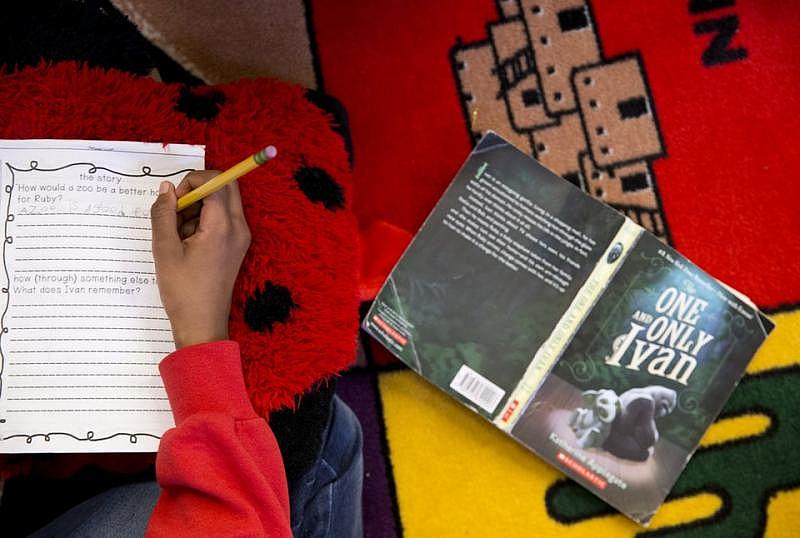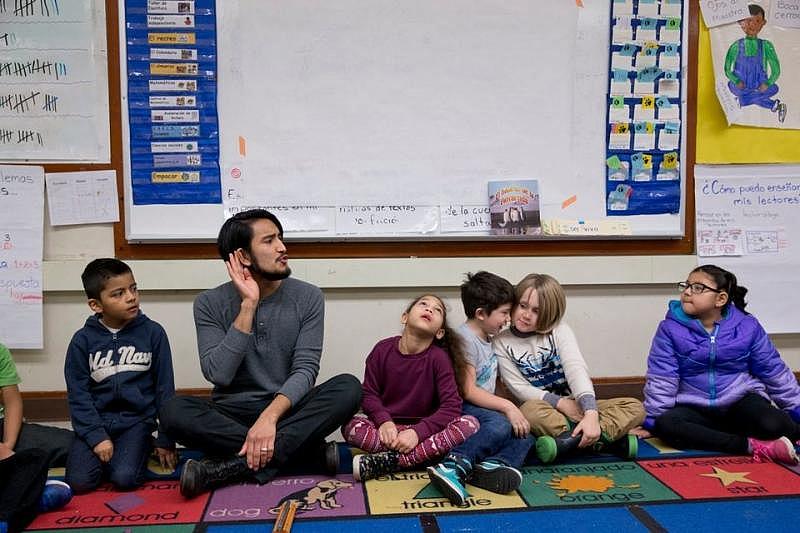Reading, Writing, Evicted: Whole classrooms suffer when high rents upend children
This is the second in a three-part series that examines the impact of Portland's housing crisis on children.This series was produced with the support of the University of Southern California Annenberg Center for Health Journalism and its Dennis A. Hunt Fund for Health Journalism.
Other stories in the series include:
Reading, Writing, Evicted: Portland's housing crisis is an education story
Reading, Writing, Evicted: Portland children don't pay rent but they are paying a price
Reading, Writing, Evicted: How Austin, Texas, hopes to combat student turnover
Reading, Writing, Evicted: A bus ride to belong
Reading, Writing, Evicted: A no-cause eviction haunts a mom and her three kids
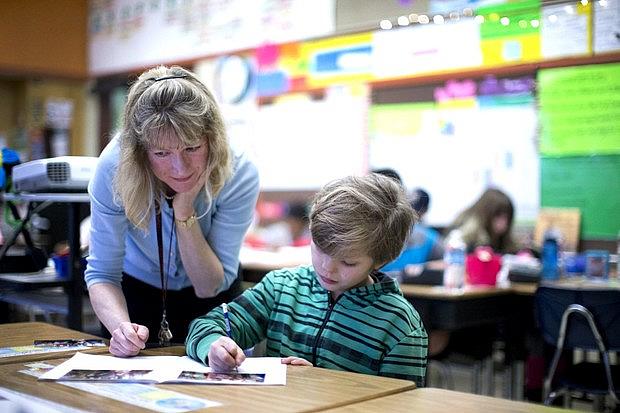
Teacher Ordella Reynolds leads a fourth-grade classroom at César Chávez K-8 School in North Portland, which is affected by heavy student turnover. This year alone, six students have left and seven have joined. On a recent day, she helps student Skylar Woodruff-Quesinberry on an assignment.
Just before winter break, a fourth grader in Ordella Reynolds’ class burst into tears.
The girl had only been in Reynolds’ class since November. The Portland teacher and her new student were still getting to know one another.
“Honey, why are you crying?” Reynolds remembered asking.
“My family is living in an Airbnb and I think we are going to move again.”
Sure enough, come January, the girl was gone.
Reynolds called the family to make sure they were OK.
“The good news is they found a more permanent solution in Vancouver,” she said. “But the bad news is now she’s been in three schools (this school year.)”
Since the start of this school year, Reynolds’ fourth-grade class at César Chávez K-8 in North Portland has lost six students and taken in seven new ones. That means 35 percent of the students she’s taught this year switched schools since September.
Ibrahim Eno, left, Eliezer Zua, Musa Muya and Junior Talanoa play music in Ordella Reynolds' fourth-grade class during indoor recess.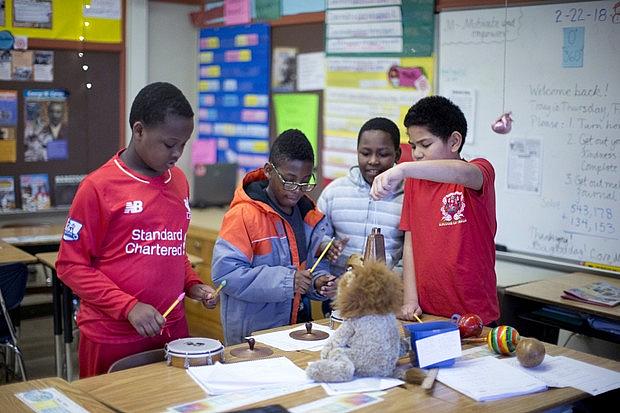
In the education world, this phenomenon is called student mobility. Education officials track it and worry when rates are high, because it has a harmful effect on learning.
Students who switch schools typically fall months behind their peers and are at a higher risk to drop out, research has found. The harm is most evident for low-income students who change schools and for students who change schools more than once over several years, studies show. A high rate of students entering or leaving a school mid-year not only sets back students who move but also their classmates who experience the churn.
A 1996 University of Chicago study found a clear difference between stable classrooms and ones that saw a lot of fluctuation. Average academic achievement is about one grade level lower in schools with high churn than high stability, it said.
“It is important to emphasize that this ‘flattening’ of curricular pace limits the amount of material to which all students are exposed, not just mobile students,” researcher David Kerbow wrote.
In her colorful classroom at César Chávez, Reynolds is in constant motion. She sets the classroom tempo like an orchestra conductor. Many of the children want her help on assignments and they need it, but she can only be in so many places at once.
She spots a boy who is off task, likely because he’s stumped.
“You got this,” she tells him. “But you have to do it in the right order. You don’t get to make up your own assignment.”
Each time a student joins or leaves Reynolds’ fourth-grade class, it disrupts the flow in her bright and welcoming second-floor classroom. Many lessons require her students to work together, Reynolds said, so having a student leave or come in mid-year is especially hard.
Kaitlin Moran, left, and Gladys Criswell raise their hands in Ordella Reynolds' fourth-grade class.
A 2013 study led by a Western Washington psychology professor found that highly mobile elementary school students are significantly less likely to participate in class.
“They’re shy; they may not have what they need. It’s just a lot to ask of kids to walk in the door and keep starting at a new place,” Reynolds said. “I’m expecting them to operate way up (high) because to lower my expectations would be the opposite of what I’m supposed to do. I need to communicate to them ‘In spite of your barriers, in spite of your trauma, I believe you can do this.’”
In addition to school changes, an unstable housing situation can cause a child to miss out on learning because they come to class late or don’t show up at all.
By January, one student in Reynolds’ class had tallied 18 absences. Another had been late 42 times.
A classroom is designed to help students to settle and grow attached to one another, Reynolds said. School churn means there are birthdays to learn or forget, to be added to or removed from the classroom’s erasable cupcake calendar. The desks in Ms. Reynolds’ class are positioned into tables, with one child serving as captain of the group. A loss or a gain shakes up the dynamics of the team, the sense of community.
Most disruptive, Reynolds said, is the fact that it takes time to get a new child caught up with the rest of the class. New students may drop in mid-week without paperwork to show what skills they’ve mastered and without any apparent back story.
Every inch of the classroom’s cheerfully decorated walls serves a purpose. There are new words to learn: antifreeze, forecast, impossible. There is the day’s schedule, a list of learning targets, such as “I can use a protractor to measure and create angles,” and a list of phrases that signal a passage has evidence to support its assertions such as, “for example” or “such as.”
The walls of Ordella Reynolds' classroom at César Chávez K-8 School in North Portland are lined with instructional displays.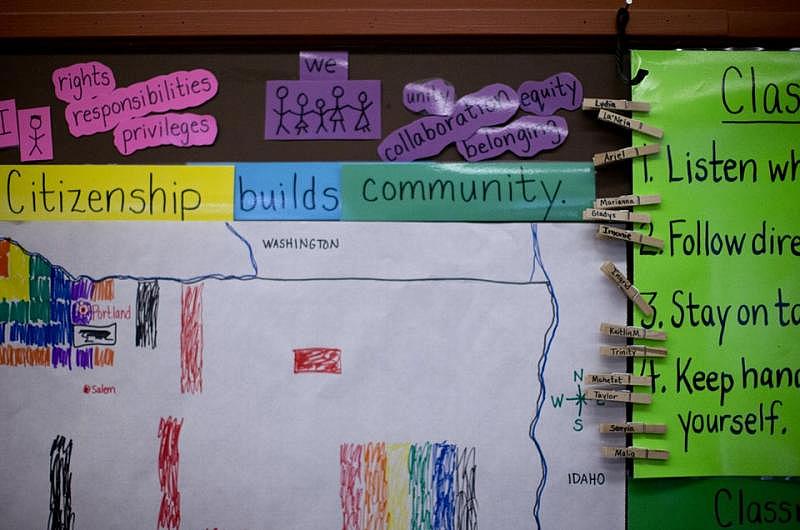
All of this helps the students help themselves, and they do.
Of the 28 children in her class, only two can count on being able to use the internet at home.
Homework can go undone because a power bill went unpaid and darkness makes it hard to see the assignment, she said.
Reynolds told The Oregonian/OregonLive she can have “the most beautifully set up classroom in the world” but at a certain point, no amount of posters can counter the setback from a housing situation in flux.
Eighth-grade teacher Morgan Evans has taught at George Middle School for 18 years and remembers when the churn was less pronounced. He worries what gentrification will do to the families he knows.


